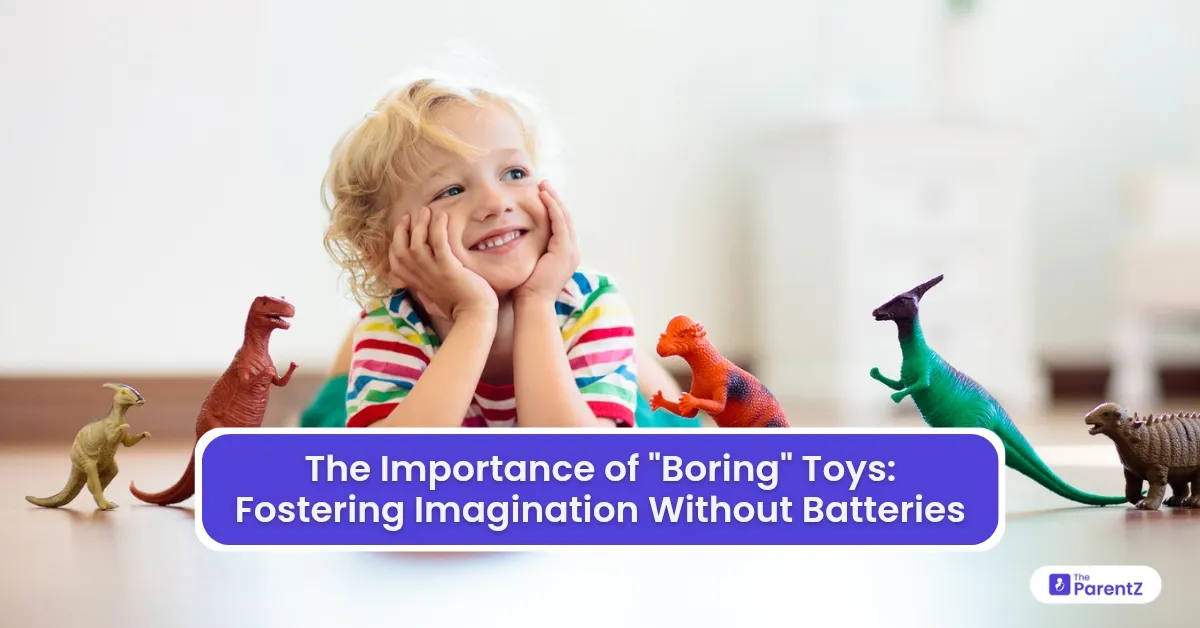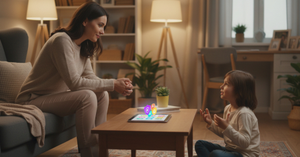Picture this: A five-year-old transforms a cardboard box into an elaborate spaceship, complete with control panels drawn in crayon and a "view screen" cut out with safety scissors. For three hours—yes, hours!—she travels the galaxy, narrating adventures and solving cosmic crises with nothing but her imagination and a box headed for recycling. Meanwhile, her battery-operated robot puppy that had been the "must-have" gift just months ago sits forgotten on a shelf. This moment perfectly captures the power of what many modern parents and children might dismiss as "boring" toys.
What Are These "Boring" Toys Anyway?
"Boring" toys refer to those simple, often natural materials that don't come with instructions, characters, or pre-programmed functions. Think wooden blocks that have been around for centuries, plain dolls waiting for personalities, cardboard boxes with infinite possibilities, sticks found during nature walks, pebbles collected from the beach, modeling clay that transforms with each touch, and the timeless combo of crayons and blank paper.
These toys earn the "boring" label because they don't perform—they don't light up, make sounds, move on their own, or offer immediate entertainment. They simply exist as raw materials, patiently waiting for a child's imagination to breathe life and purpose into them.
Why Kids Think They're Boring
In our hyper-stimulating world, traditional toys often lose the battle for attention. Today's children are surrounded by devices and toys designed by teams of experts specifically to capture and maintain their interest through constant feedback loops of lights, sounds, and movement. Electronic toys provide that satisfying dopamine hit of instant gratification—press a button, something exciting happens immediately.
Many parents have witnessed this scene: a child receives both a set of wooden blocks and an electronic toy with flashing lights and realistic sounds. The child's reaction to the blocks is often telling: "What does it do?" When explained that they don't "do" anything on their own—that the child could build whatever they want—disappointment is palpable. The electronic toy, with its immediate sensory payoff, often wins the attention battle that day.
This reaction isn't surprising. Children today are accustomed to entertainment that requires minimal effort and delivers maximum stimulation. The quiet invitation of simple toys can seem downright boring by comparison, especially when these toys require something that might feel like work—the work of imagination.
Why Previous Generations Loved Them
Children from earlier eras certainly had fewer options, but their relationship with simple toys went deeper than mere necessity. Without predetermined characters or functions, children naturally became the authors and directors of their play. The open-ended nature of these toys made them endlessly adaptable.
Many grandparents still vividly recall simple toys from their childhood. A hollowed-out corn cob doll might be a schoolteacher one day, a mother the next, and an explorer the day after that. This flexibility allowed toys to evolve alongside children's developmental needs and changing interests.
Simple toys also connected children across generations and social boundaries. The rules of marbles or jacks might vary somewhat from neighborhood to neighborhood, but the basic play patterns created a common language among children. Unlike today's character-based toys tied to specific media franchises, these universal toys weren't linked to purchasing power or access to media.
The Benefits of "Boring" Toys
The real magic of simple toys lies in what they don't do—the empty space they create for children to fill with their own ideas, stories, and solutions:
- Creativity muscles grow stronger: When nothing is prescribed, children exercise their creative thinking with each play session. A cardboard tube becomes a telescope, then a wizard's staff, then a tunnel for toy cars. This mental flexibility is foundational for innovative thinking later in life.
- Problem-solving skills develop naturally: Children who want to build a block tower taller than themselves encounter genuine physics problems that need solving. Through trial and error, they discover principles of balance and foundation that no app could teach so meaningfully.
- Attention spans deepen: Self-directed play often sustains interest far longer than passive entertainment. Children who typically bounce from activity to activity often spend concentrated hours with open-ended materials when they're invested in their self-created scenarios.
- Language development flourishes: Creating stories and scenarios requires rich vocabulary and narrative skills. A child narrating an adventure for their action figures is practicing sophisticated language use without even realizing it.
- Emotional processing happens organically: Simple toys provide safe spaces for children to work through big feelings and social situations. Many children process family changes, school anxieties, or social challenges through elaborate doll play or action figure scenarios.
- Independence and confidence grow: When children create successful play without external direction, they develop a powerful sense of agency. "I made this" becomes "I can make things happen" in the broader world.
Finding Balance in a Digital World
No one is suggesting throwing out all electronic toys or pretending we don't live in a digital era. Modern toys and technology have their place in children's lives. The key is thoughtful balance:
- Have a variety of play options available, from high-tech to no-tech
- Create specific tech-free times or zones in the home
- Occasionally, join in to model imaginative play without taking over
- Remember that boredom itself isn't something to fear—it's often the birthplace of creativity
- Observe which toys genuinely engage your unique child over time, not just initially
One approach that works well for many families is creating a rotation system. Some parents store a portion of toys away for a few months, then swap them out. This prevents overwhelming children with too many choices while making old toys feel fresh and interesting again when they return.
Conclusion
Many parents have witnessed the transformation: a tablet-loving child staring listlessly around the yard, complaining of boredom, suddenly becomes engaged when someone starts collecting interesting sticks and arranging them in the dirt. By dinnertime, they've created an entire fairy village with paths made of pebbles, leaf roofs, and acorn cap bowls. "Can we make more tomorrow?" the child asks—the same child who had declared the yard "boring" just hours earlier.
Remember, there's no perfect formula for introducing simple toys. Every child is different, with unique temperaments, interests, and experiences. What works beautifully for one family might fall flat for another. The goal isn't to create some idealized, screen-free childhood straight from a parenting magazine, but to create a healthy play diet that includes space for imagination to flourish.








Be the first one to comment on this story.